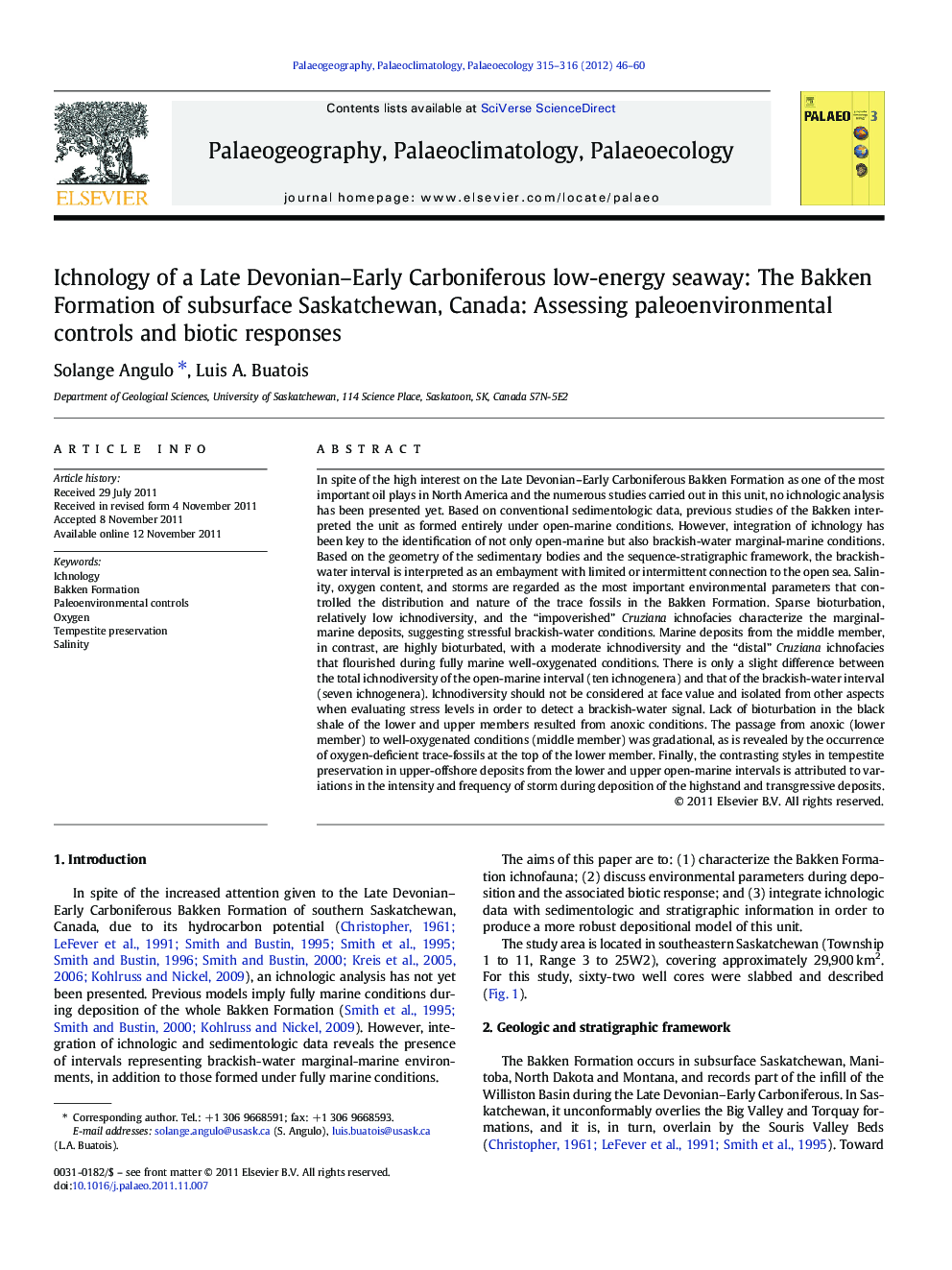| Article ID | Journal | Published Year | Pages | File Type |
|---|---|---|---|---|
| 4467047 | Palaeogeography, Palaeoclimatology, Palaeoecology | 2012 | 15 Pages |
In spite of the high interest on the Late Devonian–Early Carboniferous Bakken Formation as one of the most important oil plays in North America and the numerous studies carried out in this unit, no ichnologic analysis has been presented yet. Based on conventional sedimentologic data, previous studies of the Bakken interpreted the unit as formed entirely under open-marine conditions. However, integration of ichnology has been key to the identification of not only open-marine but also brackish-water marginal-marine conditions. Based on the geometry of the sedimentary bodies and the sequence-stratigraphic framework, the brackish-water interval is interpreted as an embayment with limited or intermittent connection to the open sea. Salinity, oxygen content, and storms are regarded as the most important environmental parameters that controlled the distribution and nature of the trace fossils in the Bakken Formation. Sparse bioturbation, relatively low ichnodiversity, and the “impoverished” Cruziana ichnofacies characterize the marginal-marine deposits, suggesting stressful brackish-water conditions. Marine deposits from the middle member, in contrast, are highly bioturbated, with a moderate ichnodiversity and the “distal” Cruziana ichnofacies that flourished during fully marine well-oxygenated conditions. There is only a slight difference between the total ichnodiversity of the open-marine interval (ten ichnogenera) and that of the brackish-water interval (seven ichnogenera). Ichnodiversity should not be considered at face value and isolated from other aspects when evaluating stress levels in order to detect a brackish-water signal. Lack of bioturbation in the black shale of the lower and upper members resulted from anoxic conditions. The passage from anoxic (lower member) to well-oxygenated conditions (middle member) was gradational, as is revealed by the occurrence of oxygen-deficient trace-fossils at the top of the lower member. Finally, the contrasting styles in tempestite preservation in upper-offshore deposits from the lower and upper open-marine intervals is attributed to variations in the intensity and frequency of storm during deposition of the highstand and transgressive deposits.
► An integrated sedimentologic/ichnologic study was made on the Bakken Formation. ► Open-marine and brackish-water conditions were recognized. ► Ichnofauna was mostly controlled by salinity, oxygen and storm intensity/frequency.
